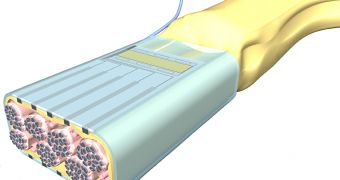DARPA's really been funneling funds into robotics, and we can understand why. Artificial intelligence is farther along than ever, and semi-automated and even fully automated operations have been successfully created.
The latest project of the Defense Advanced Research Projects Agency, however, isn't so much concerned with defense as with disabled people and patients.
Which is to say, DARPA has created something that people with missing limbs, or limb parts, might be overjoyed to learn about: new neuromuscular interfaces.
More specifically, DARPA has come up with a way to create mind-controlled prosthetic limbs, and not just any prosthetic limbs.
That's right, it wasn't enough that the robotic arms and legs could be moved with a thought. DARPA decided to implement some new neuromuscular interfaces as well, which give bionic limbs the ability to provide tactile feedback.
Basically, people with one such prosthetic limb will feel what they are touching.
Commands to the bionic limbs are sent through the remaining nerve and muscle tissue in their leftover stumps.
By that same token, the nerve endings can interpret electrical signals from the prosthetic limbs and imitate the sense of touch.
One procedure used here is TMR: surgery reroutes signals from severed nerves to other muscle tissue. They can then become amplifiers to control the limb.
Another procedure, called FINE (flat interface nerve electrode) sends direct sensory feedback to the arm's owner, by flattening out nerve fibers so that several of them are exposed to the electrical current.
All in all, it should be possible for patients to "move a hand without keeping their eyes on it — enabling simple tasks, like rummaging through a bag for small items, not possible with today’s prosthetics."
Watch the videos below if you're interested in walkthroughs for both technologies. The first is about TMR, the second about FINE.

 14 DAY TRIAL //
14 DAY TRIAL // 
